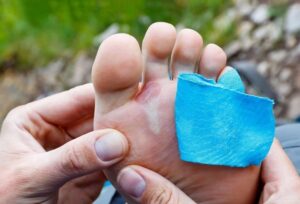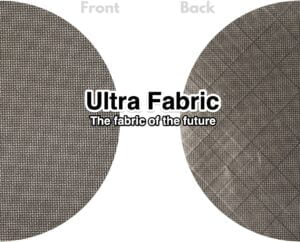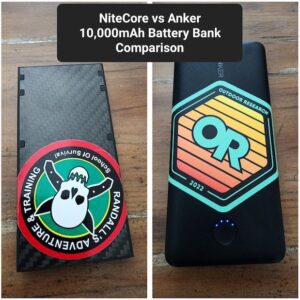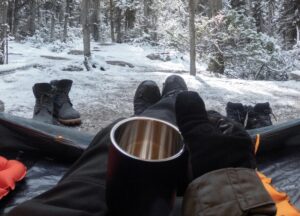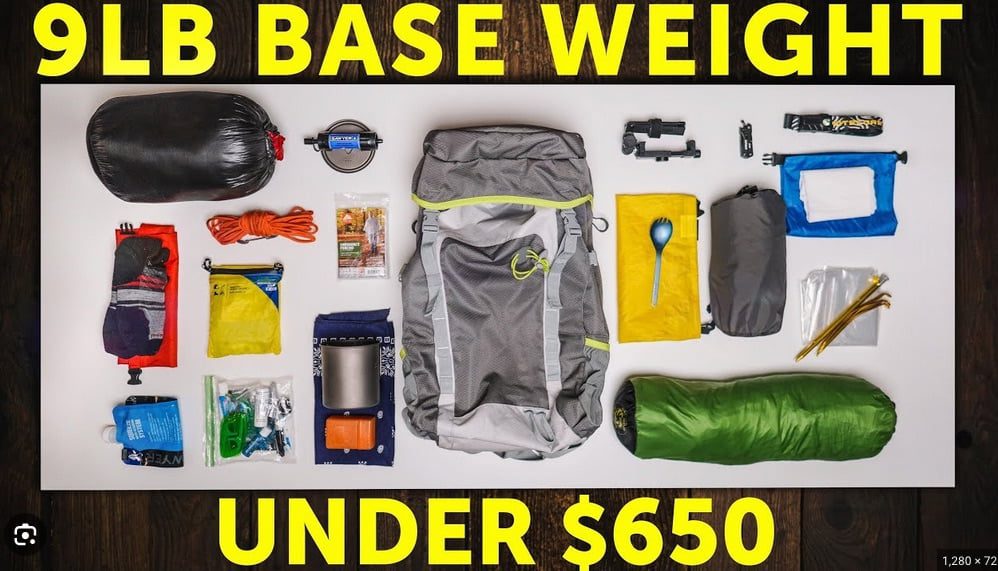
Ultralight backpacking has exploded in popularity in recent years. Shedding excess pack weight improves comfort, increases mileage, and enhances the pure wilderness experience for many hikers. However, others see ultralight as an extremist approach that sacrifices comfort and durability. In this complete guide, we’ll cover the principles, benefits, and gear options to help you curate the perfect minimalist ultralight backpacking kit.
What is Ultralight Backpacking?
Ultralight backpacking aims to pare your gear down to the absolute essentials needed for safety and comfort on the trail. The traditional benchmark for an ultralight “base weight” (total pack weight minus food and water) is 10 pounds or less. However, many modern hikers manage to get their base weights down to 5-8 pounds with high-end gear selections.
The rise of ultralight gear and techniques has benefits even for those not pursuing extreme minimalism. Shedding a few pounds from your pack makes hiking more enjoyable for almost everyone.
Benefits of Going Ultralight
- Increased comfort and reduced fatigue. Heavy packs strain your body, especially knees and shoulders. Slimming your load makes a huge difference over the course of a thru-hike.
- Higher daily mileage. Traveling farther each day helps you better enjoy long trails like the PCT and CDT. Lighter packs contribute to higher overall fitness levels.
- More flexibility and safety in challenging terrain. Scrambling up slopes and balancing across logs is far easier sans bulky gear.
- Lower injury risk. Heavy packs stress joints and connective tissues, leading to repetitive strain injuries over time.
- Freedom of movement. Ultralight gear enhances your natural movement and makes hiking feel almost effortless.
- Pure wilderness experience. Minimalism fosters a deeper connection with the natural world.
- Forces intentionality about gear. Assessing each item’s value reduces clutter and consumerism.
How to Curate an Ultralight Backpacking Kit
Building an ultralight gear kit takes research and intent. Follow these principles:
- Do your homework. Read gear guides and forums to learn which items offer the best weight-to-performance ratio. Cottage company gear often excels here.
- Focus on the “Big Three”: Pack, shelter, and sleep system. This is where you’ll achieve the biggest weight savings.
- Compare weights across similar products to choose the lightest options. Weigh gear yourself.
- Mind the details. Little things add up quick – customize and trim straps and accessories.
- Multitask items when possible. Trekking poles do double duty as tent supports. Bandanas filter water and protect from the sun.
- Evaluate every piece critically. Do you really need it? Does it have a lighter alternative?
- Upgrade over time. Swap out heavier gear as budget allows.
Big Three Ultralight Gear
As mentioned above, you’ll achieve the biggest base weight reductions by slimming down your “Big Three” items: pack, shelter, and sleep setup. Here are some stellar ultralight options in each category:
Ultralight Backpacks
Look for minimalist packs with no rigid framesheet. Cuben fiber and Dyneema Composite Fabrics (DCF) models are pricier but very light.
- Gossamer Gear Mariposa (24 oz)
- ZPacks Arc Blast (16 oz)
- Waymark Gear Thru 40L (20 oz)
- Atom Packs Mo (16 oz)
- Hyperlite Mountain Gear Windrider (24 oz)
Ultralight Shelters
Trekking pole tents, tarps, and DCF materials shine here. Look for breathable single wall designs.
- ZPacks Duplex Tent (19 oz)
- Six Moon Designs Lunar Solo (26 oz)
- Tarptent ProTrail (24 oz)
- Gossamer Gear The One (18 oz)
- Mountain Laurel Designs Duomid (16 oz)
Ultralight Sleep Systems
Choose lightweight 20-30°F quilts over mummy bags. Inflatable pads strike the best balance of comfort and weight.
- Enlightened Equipment Revelation 20° quilt (16 oz)
- Feathered Friends Swallow 20° bag (26 oz)
- Nemo Tensor Insulated sleeping pad (14 oz)
- Thermarest Uberlite pad (8 oz)
- Sea to Summit Ether Light XT Extreme (35 oz total)
Other Notable Ultralight Gear Categories
Beyond the Big Three, here are some other gear categories where choosing lightweight options makes a significant impact:
Footwear
- Trail runners over boots. Breathable, quick-drying, with lower weight. Top choices: Altra Lone Peak, Topo Athletic Ultraventure, Salomon XA Pro 3D
- Camp shoe alternatives: Lightweight flip flops, sandals, or none at all
Trekking Poles
- Carbon fiber over aluminum. Lighter yet stiff and strong. Brands like Gossamer Gear, Black Diamond, LEKI.
Rain Gear
- Lightweight wind shells instead of waterproof layers. More breathable and packable.
- Frogg Toggs for an affordable UL rain jacket. Pit zips help vent sweat.
- Rain skirts as a lower body alternative to rain pants.
Cookware
- Canister stoves: Small and ignite easily. The MSR Pocket Rocket is a winner.
- Cold soaking lets you ditch the stove entirely when temperatures allow.
- Titanium pots/mugs. Very light yet durable. Toaks and Vargo make excellent ones.
- Long handled titanium spoons for easier cooking and scraping.
Water Treatment
- Sawyer Squeeze or Katadyn BeFree filters. Compact, screw onto disposable water bottles.
- Aquamira drops when you want to trim all weight. Slow to treat water, however.
- Smartwater bottles to drink from and use with water filters. Light disposable vessels.
Navigation
- Gaia GPS app + PDF maps for redundant navigation capability with no weight.
- Dedicated GPS devices are heavy. Choose a mini locator like the inReach Mini or Garmin inReach Explorer+.
- Guidebook page printouts rather than carrying full books. Mail extras ahead.
Clothing
- Focus on bringing only essential layers: baselayers, insulating midlayer, wind shell. Avoid redundancies.
- Lightweight down or synthetic insulated jackets. Versatile for variable conditions. Top options include the Montbell Plasma 1000 jacket, Enlightened Equipment Torrid jacket, and Patagonia Nano Puff.
- Merino wool baselayers for odor resistance. Brands like Icebreaker, Smartwool, and First Lite.
- For dry trips, quick dry shorts + wind pants are a flexible and breathable lower half layering system. Brands like the Outdoor Research Ferrosi pants and Mountain Hardwear Dynama pants.
- Sun hoody instead of sunscreen for lightweight sun protection. The Columbia Tamiami and Patagonia Sunshade Tech are great options.
- Running visors are highly packable sun hats perfect for high exertion.
Additional Ultralight Backpacking Tips
- Replace your pack hip belt with 1″ webbing and a buckle. Saves 4-8 oz easy.
- Buy gear without included stuff sacks. Use trash compactor bags as liners instead.
- Cut your toothbrush handle down to just a couple inches. Scoop out excess lip balm. Shave extraneous straps and hardware.
- For rainy trips, bring 1 spare baselayer & socks vs. a full outfit. Wear damp items if needed till town.
- Use trekking poles for shelter support and leave tent poles at home.
- Share camp gear like stoves, toiletries, and first aid kits on group trips.
- Replace your pack’s framesheet with thin CCF pad segments or a cut-down zRest pad.
Ultralight Luxury Items
Going ultralight doesn’t mean depriving yourself of everything. Here are some luxury items that can fit into minimalist kits:
- Ultralight camp chair like the Helinox Chair Zero (17 oz)
- Inflatable pillow such as the Sea to Summit Aeros (2.8 oz)
- Packable down jacket for extra warmth at camp like the Montbell Superior Down Parka (7 oz)
- Bluetooth speaker to play music from your phone, like the JBL Clip 4 (5 oz)
- Solar charger like the Nekteck 28W lets you charge devices without battery pack weight
- E-reader such as the Kindle Paperwhite for enjoying books without their weight
- Thin camp sandals like Xero Shoes Z-Trail for creek crossings and around camp
Key Takeaways
The ultralight concept may seem extreme, but it contains valuable lessons for all backpackers. Slimming your load even a couple pounds makes hiking vastly more enjoyable. Focus first on the Big Three, and remember to evaluate each piece of gear critically. With intentional choices, you can craft a kit with just the essentials necessary to thrive outdoors. Your joints will thank you!
